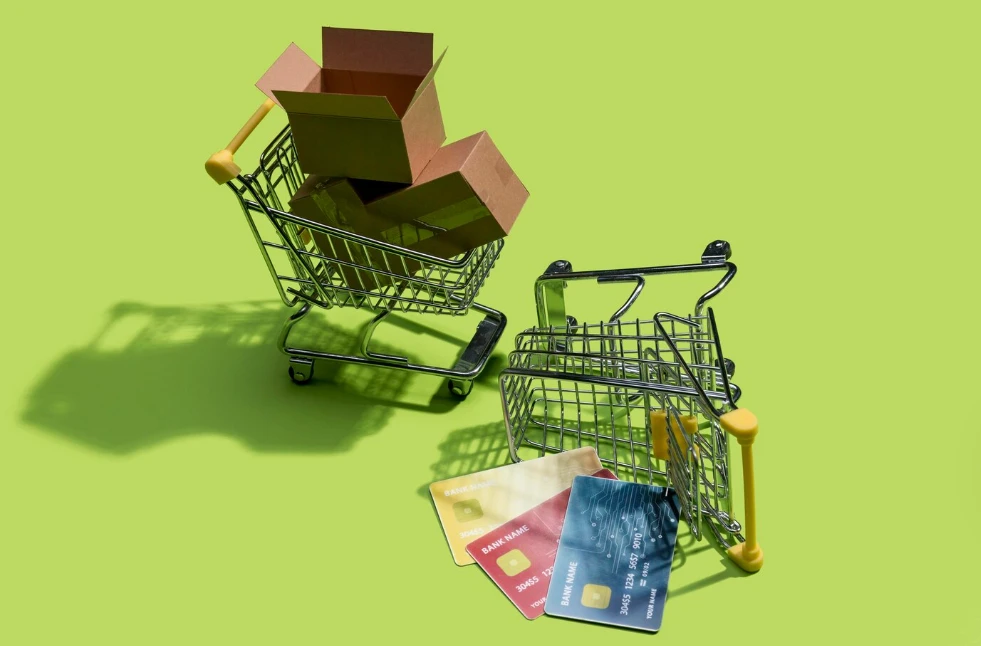E-commerce | How to Work with Its Types, Fields, and Benefits
E-commerce represents a significant evolution in the business world, transforming traditional shopping methods and opening new horizons for trade. This transformation is attributed to several factors, including rapid technological advancements, the widespread use of social media, and increased internet accessibility. In this article, you will learn everything you need to know about e-commerce and online stores, including their types, domains, and much more.

E-commerce is the process of buying and selling products or services over the Internet. This trade involves electronic communication between the seller and the buyer through channels such as the Internet and smartphones. E-commerce can encompass a variety of forms, ranging from websites selling physical products to services delivered online.

B2C (Business-to-Consumer)
- Description: Businesses sell products or services directly to end consumers.
- Example: Online retail stores like Amazon or company websites selling products to individual customers.
B2B (Business-to-Business)
- Description: Involves the sale of products or services between businesses, where the customer is another company.
- Example: Online platforms connecting suppliers and buyers for wholesale transactions.
C2C (Consumer-to-Consumer)
- Description: Individuals sell products or services directly to other individuals.
- Example: Online auction sites like eBay or platforms for exchanging used goods.
C2B (Consumer-to-Business)
- Description: Individuals offer their products or services to businesses, and companies purchase them.
- Example: Marketing platforms for bloggers or individuals providing their skills online.
G2C (Government-to-Consumer)
- Description: Governments provide electronic services to citizens, such as online tax payments or passport applications.
- Example: Online government platforms for citizens to access public services.
G2B (Government-to-Business)
- Description: Governments offer services to businesses online, such as electronic tenders.
- Example: Government websites for businesses to participate in electronic tenders or register their companies.
B2G (Business-to-Government)
- Description: Businesses submit their offers or services to the government online.
- Example: Companies bidding for government contracts through online platforms.

E-commerce offers numerous advantages for individuals and businesses. Here are some key benefits:
Accessibility
Consumers can access online stores anytime and anywhere through the internet.
Time and Effort Savings
Consumers can quickly purchase products and services without visiting physical stores.
Wide Range of Products
E-commerce platforms can display a diverse array of products and services, allowing consumers to browse and compare easily.
Cost Savings
Businesses can reduce operational costs compared to traditional stores, potentially leading to lower product prices.
Ease of Comparison
Consumers can easily compare products and prices across multiple stores, aiding them in making informed decisions.
Customer Service
Most online stores provide online customer support, facilitating effective communication and issue resolution.
24/7 Shopping
Consumers have the flexibility to shop around the clock without time constraints.
Smart Inventory Management
Businesses can efficiently manage large quantities of products without the need for extensive physical display space.
Customized Offers and Discounts
Businesses can tailor promotions and discounts to specific customer segments.
Secure Payments
E-commerce platforms offer secure and reliable payment methods, such as credit cards and online banking.
Order Tracking and Shipping
Customers can track the status of their orders and monitor shipping processes online.
Global Market Expansion
Businesses can reach a global audience, expanding their market reach beyond geographical boundaries.
Social Shopping Experience
E-commerce integrates social media, allowing users to share opinions and reviews, creating a social shopping experience.

The operation of e-commerce stores relies on an integrated system that allows buyers to view and purchase products or services online. Here's how e-commerce stores work:
Website Creation
Start by creating a user-friendly and well-organized website.
Content Management System (CMS)
Utilize a CMS to manage and update content on the site, including adding new products, updating prices, and modifying information.
Product Database
Store information about products in a database, including prices, descriptions, images, and inventory.
E-Payment System
Implement a secure e-payment system that enables customers to complete online transactions, including the use of credit cards, e-payment gateways, and other options.
Shopping Cart
Include a shopping cart to allow users to add products to their shopping list and track their shopping activities.
Digital Marketing
Use digital marketing to attract more customers to the site, including the use of social media and online advertisements.
Delivery and Customer Service
Provide shipping options, order tracking, and efficient customer service to address customer inquiries.
Information Security
Ensure high-level security for customer information and payment transactions.
Reports and Analysis
Use reports and analysis to understand sales performance, identify trends, and improve business strategies.
Marketing Strategy Improvement
Continuously improves marketing strategies based on analysis and customer experiences to increase sales and enhance the shopping experience.

E-commerce encompasses diverse fields and industries. Here are some key fields of e-commerce:
- Online Retail: Includes consumer goods, clothing, electronics, and household products.
- Digital Services: Provides services online, such as online tutoring, consultations, programming, design, writing, and translation.
- Online Booking: Covers hotel reservations, event ticketing, flight bookings, and restaurant reservations.
- Wholesale E-commerce: Platforms for wholesale transactions, connecting businesses and distributors.
- Social Commerce: Integrates social media for direct product sales or promotion.
- B2B E-commerce: Involves exchanging products and services between businesses.
- B2C E-commerce: Directly sells products to consumers.
- C2C E-commerce: Involves buying and selling products between consumers.
- Subscription-based E-commerce: Monthly or yearly subscription models for services or products.
- Health E-commerce: Sells health-related products, and medicines, and offers online health consultation services.
- Education E-commerce: Sells online courses and provides distance learning services.
- Food E-commerce: Offers online food and grocery delivery services.
- Arts and Culture E-commerce: Sells artwork, books, music, and related products.
- Sports and Entertainment E-commerce: Sells sports clothing, and equipment, and provides online sports streaming services.
- Travel and Tourism E-commerce: Covers hotel bookings, car rentals, and online flight reservations.

Several well-known e-commerce platforms facilitate the creation and management of online stores. Here's a brief overview of some leading platforms:
Shopify
Pros:
- User-friendly interface and attractive design.
- High customization capabilities.
- Support for e-payments.
- Multiple apps to enhance store functionalities.
Cons:
- Monthly fees and transaction charges.
- Some features may require additional app installations.
WooCommerce (WordPress)
Pros:
- Built on the WordPress content management system.
- Free and easy to install.
- Powerful customization using plugins.
- Integrates with multiple payment gateways.
Cons:
- Requires WordPress hosting.
- Some plugins may be expensive.
Magento
Pros:
- Offers high flexibility and customization.
- Suitable for large stores.
- Integrates with various payment gateways.
- Provides advanced analytical reports.
Cons:
- Requires technical expertise.
- Demands robust hosting.
BigCommerce
Pros:
- Easy to use with quick setup.
- No transaction fees.
- Built-in marketing features.
- Good support for large stores.
Cons:
- Costs may be higher for large stores.
Amazon Seller Central
Pros:
- Broad access to a large customer base.
- Logistics capabilities and shipping services.
- Beginner-friendly environment.
- Integrated marketing and analytical tools.
Cons:
- Sales and subscription fees.
Etsy
Pros:
- Geared towards artistic and handmade products.
- Large audience of art and craft enthusiasts.
- User-friendly with quick setup.
Cons:
- Listing fees and sales commissions.
These are just a few of the well-known e-commerce platforms, each with different features and costs. Users can choose the one that best fits their individual needs and goals.
In conclusion, the ongoing success of e-commerce represents a significant development in the global business market. This growth continues to evolve with increasing reliance on technology and changing consumer shopping habits.
Powered by Froala Editor







































